Primrose
The Wildlife Trusts manage many woodland nature reserves sympathetically for a range of spring flowers, from pretty Primroses to fragrant Ramsons, showy Bluebells to delicate Wood Anemones. A mix of coppicing, scrub-cutting and ride maintenance open up the woodland floor to the sun, helping many flowers and plants to thrive. You can help too: volunteer for your local Wildlife Trust and you could be involved in everything from traditional forest crafts to raising awareness about woodland wildlife.
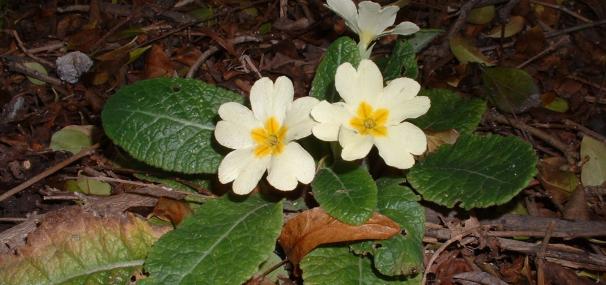
Petty Spurge
Petty Spurge is a common plant of cultivated ground such as gardens, fields and waste ground and sometimes considered a weed. It unusual flowers appear between April and October and, when ripe, its seeds are dispersed in an explosive way. The seeds of Petty Spurge are persistent and ones as old as 50, or even 100, years old have reportedly germinated.
Although they sometimes don't look especially wildlife-friendly, our field edges and waste grounds can provide valuable habitats for all kinds of plants and animals. The Wildlife Trusts get involved in different projects to help make these places as beneficial for wildlife as possible. We have a vision of a 'Living Landscape': a network of habitats and wildlife corridors across town and country, which are good for both wildlife and people. You can support this greener vision for the future by joining your local Wildlife Trust.

Sea Spurge
Sea Spurge is a common plant of sand dunes and coastal areas, especially in southern England and Wales. It flowers between June and October and has fleshy leaves which help the plant retain water in the arid conditions in which it thrives. It is a popular plant among gardeners in coastal areas when creating salt-tolerant gardens and rockeries.
The Wildlife Trusts look after many coastal habitats for the benefit of all kinds of wildflowers, such as Sea Spurge, and are working closely with farmers, landowners and developers to promote wildlife-friendly practices in these areas. We have a vision of a 'Living Landscape': a network of habitats and wildlife corridors across town and country, which are good for both wildlife and people. You can support this greener vision for the future by joining your local Wildlife Trust.
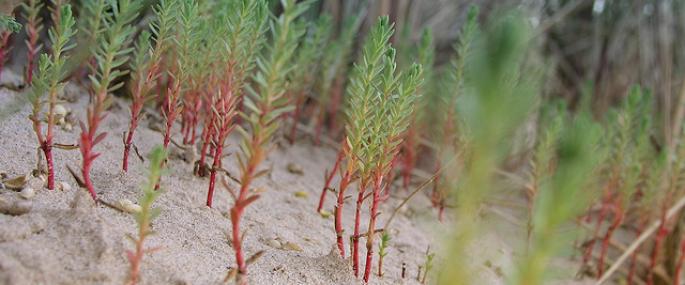
Wood Spurge
Wood Spurge is, as its name suggests, commonly found in woodlands, particularly damp and coppiced woods. The ancestor of our garden varieties of Euphorbia (spurge), its attractive, greeny-yellow flowers can be seen from April to June.
The Wildlife Trusts manage many woodland nature reserves sympathetically for a range of spring flowers, from the unusual-looking Wood Spurge to fragrant Ramsons, showy Bluebells to delicate Wood Anemones. A mix of coppicing, scrub-cutting and ride maintenance open up the woodland floor to the sun, helping many flowers and plants to thrive. You can help too: volunteer for your local Wildlife Trust and you could be involved in everything from traditional forest crafts to raising awareness about woodland wildlife.
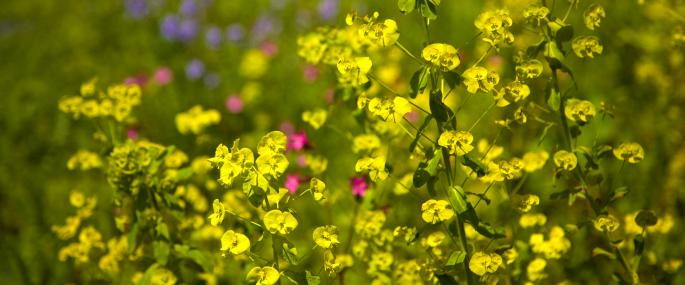
White Bryony
White Bryony is a climbing hedgerow and woodland edge plant that flowers between May and August and produces red and shiny berries that can be seen, covered in frost, in winter. Our only native member of the cucumber family, White Bryony is actually highly poisonous. The roots are particularly toxic and, despite their bitter taste, sometimes get eaten by cattle with fatal consequences.
Our hedgerows support all kinds of wildlife, providing vital food and shelter. But these habitats are disappearing with the intensification of agriculture. The Wildlife Trusts are working closely with farmers, landowners and developers to promote wildlife-friendly practices, such as planting hedges and leaving field margins. We have a vision of a 'Living Landscape': a network of habitats and wildlife corridors across town and country, which are good for both wildlife and people. You can support this greener vision for the future by joining your local Wildlife Trust.
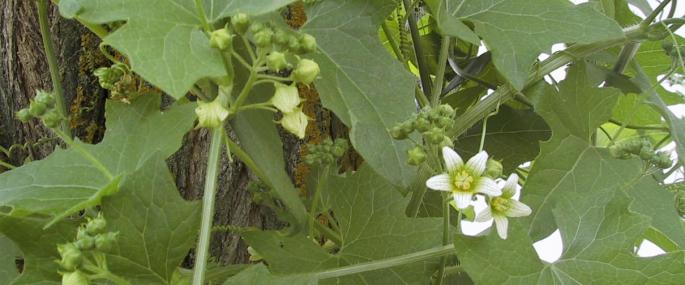
Dog's Mercury
A common plant often seen carpeting the floor of ancient woodlands, Dog's Mercury can quickly colonise and spread by its underground rhizomes (stems). It can be so expansive that it shades woodland floors and crowds out rarer species like Fly orchids and Oxlip. It produces small flowers from February to April, but leaves can persist throughout the year.
The Wildlife Trusts manage many woodland nature reserves sympathetically for a range of wildflowers. A mix of coppicing, scrub-cutting and ride maintenance open up the woodland floor to the sun, helping many flowers and plants to thrive and keeping others that spread easily, such as Dog's Mercury, under control. You can help too: volunteer for your local Wildlife Trust and you could be involved in everything from traditional forest crafts to raising awareness about woodland wildlife.
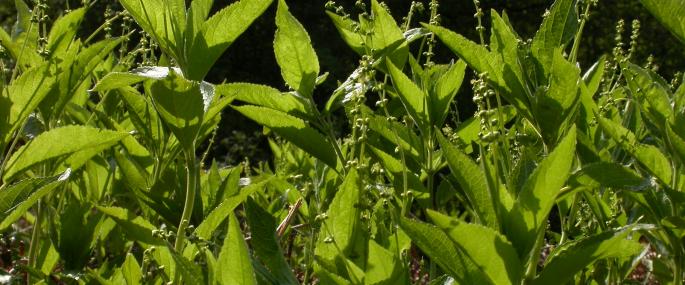
Wild Angelica
Wild Angelica is a common and robust plant of damp meadows, ditches and wet woodlands. As a member of the carrot family (an umbellifer), it displays large, umbrella-like clusters of purple-tinged flowers between July and September which are attractive to a range of insects. These flowers smell like the garden variety of angelica which is used to make sweet cake decorations.
Human activity, including the drainage of land for agriculture and development, has resulted in the disappearance of many of the UK's wetlands. The Wildlife Trusts are working closely with planners, developers and farmers to ensure our wetlands are protected. You can help too: add native plants and flowers to a wildlife-friendly pond and provide shelter for amphibians and nectar for insects. In partnership with the RHS, The Wildlife Trusts' Wild About Gardens initiative can help you plan your wildlife garden.
Wild Carrot
Wild Carrot is a widespread perennial plant of grasslands, particularly those on chalk soils, and coastlines. In bud, the dense umbels (umbrella-like) of flowers look reddish, but they soon bloom into white flowers. These flowers can be seen from June to September, eventually turning into concave, bird's-nest-like seedheads.
Areas of rare and unique wildlife, chalk grasslands have been likened to rainforest for the diversity of species they hold. But they are being lost at an alarming rate due to changes in land use causing the decline of grazing: it's estimated that we've lost 80% of our chalk grassland over the last 60 years. The Wildlife Trusts manage many grassland nature reserves for the benefit of the rare wildlife they hold. You can help too: volunteer for your local Wildlife Trust and you could be involved in everything from scrub-cutting to stockwatching.
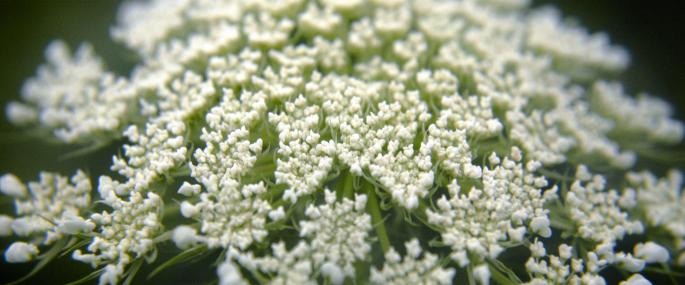
Hogweed
Unlike its alien relative, Giant Hogweed, Hogweed is a native plant which is abundant in hedgerows, roadside verges, waste grounds and rough grasslands. As a member of the carrot family (an umbellifer), it displays large, umbrella-like clusters of creamy-white flowers between May and August which are attractive to a range of insects. It can often be seen flowering all year-round.
Although they sometimes don't look especially wildlife-friendly, our roadside verges and waste grounds can provide valuable habitats for all kinds of plants and animals. The Wildlife Trusts get involved in different projects to help make these places as beneficial for wildlife as possible. We have a vision of a 'Living Landscape': a network of habitats and wildlife corridors across town and country, which are good for both wildlife and people. You can support this greener vision for the future by joining your local Wildlife Trust.
Giant Hogweed
Giant Hogweed is an introduced species that has become widespread and naturalised in the UK, crowding out our native wildflowers and causing problems for our native wildlife. The Wildlife Trusts work with researchers, scientists and other conservationists to monitor changes in our native wildlife to determine the effects of environmental change, such as the introduction of new species or climate change. You can help: volunteer for your local Trust and you'll be able to monitor populations and survey habitats, adding to a growing bank of data.
